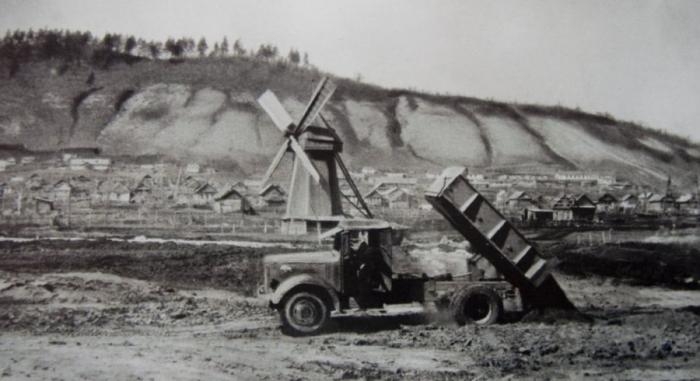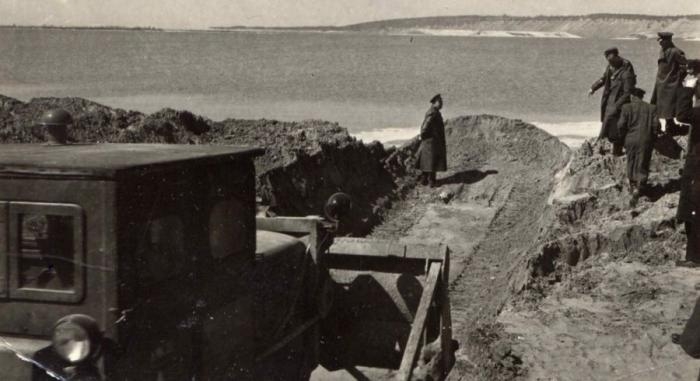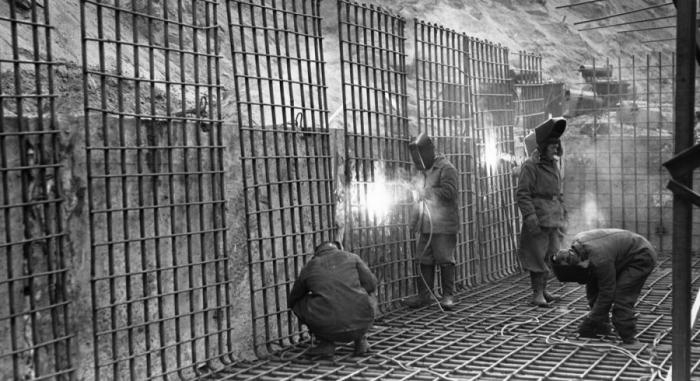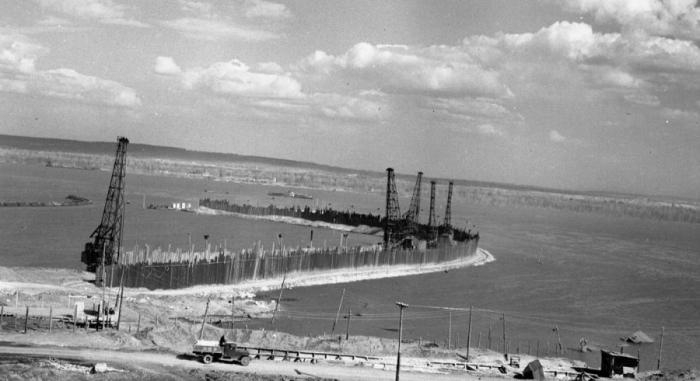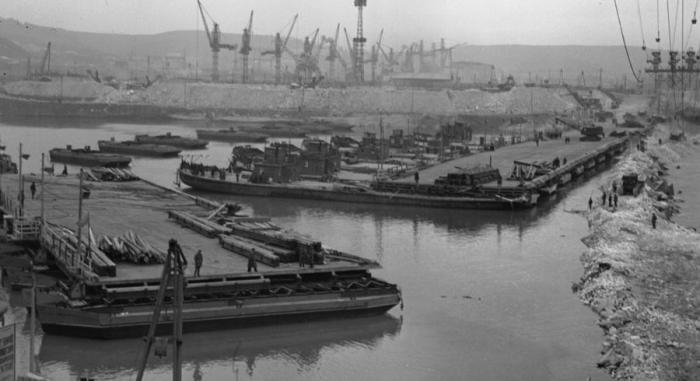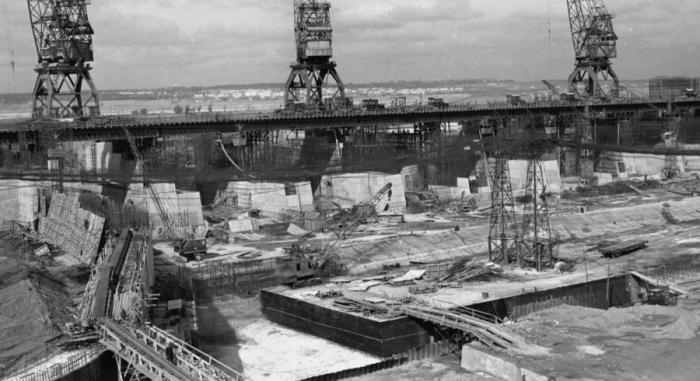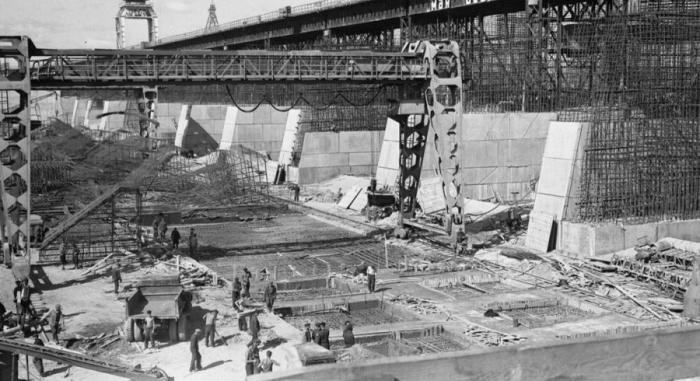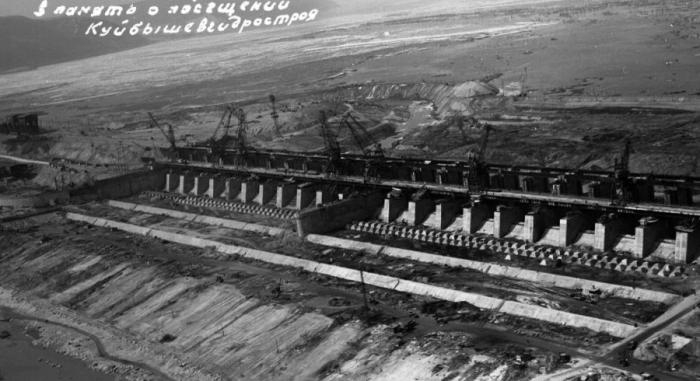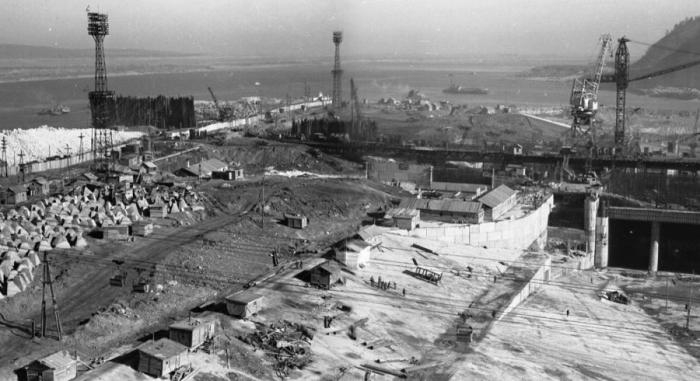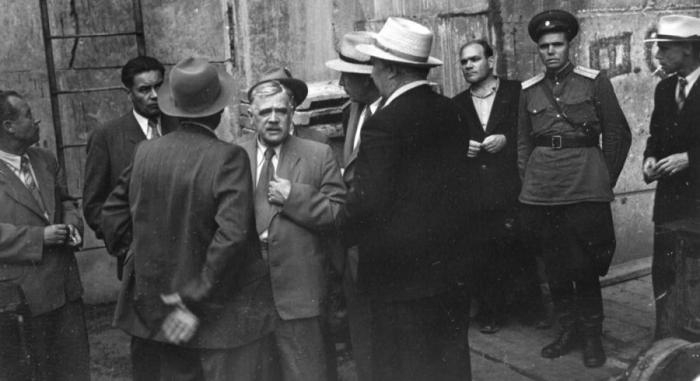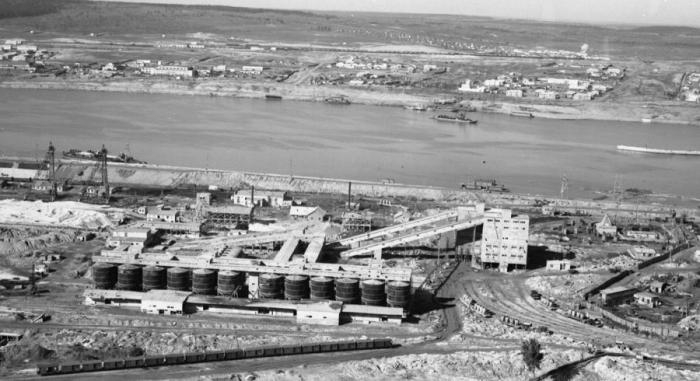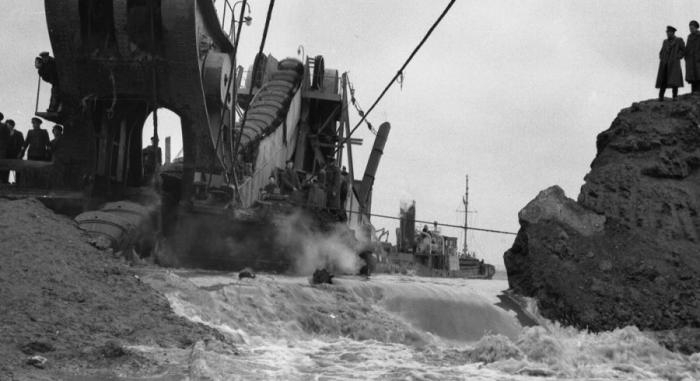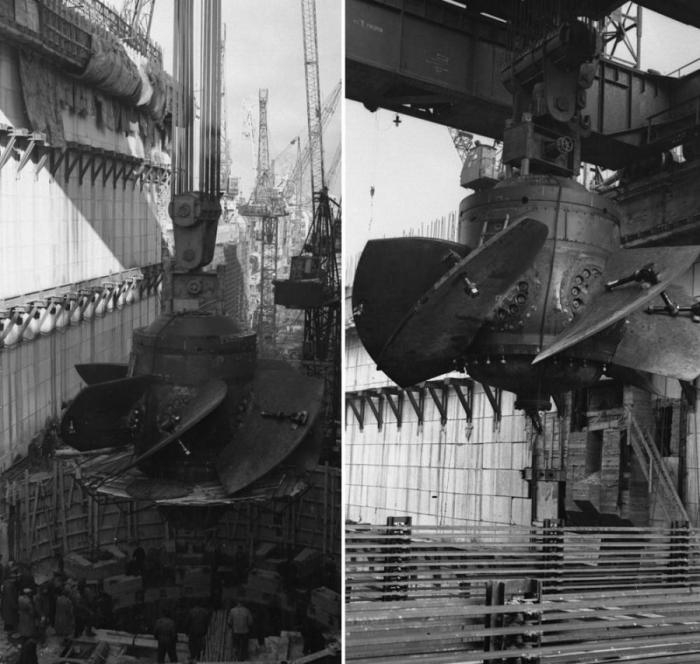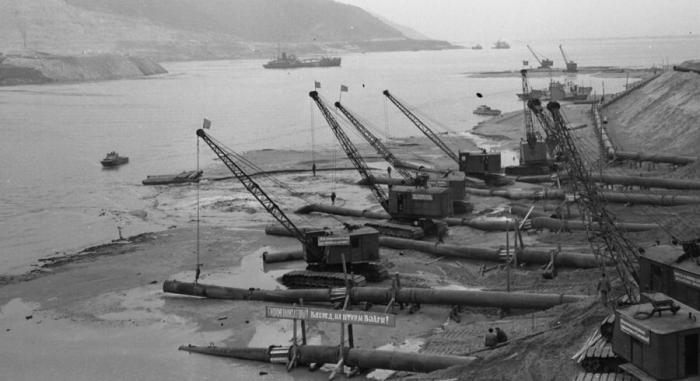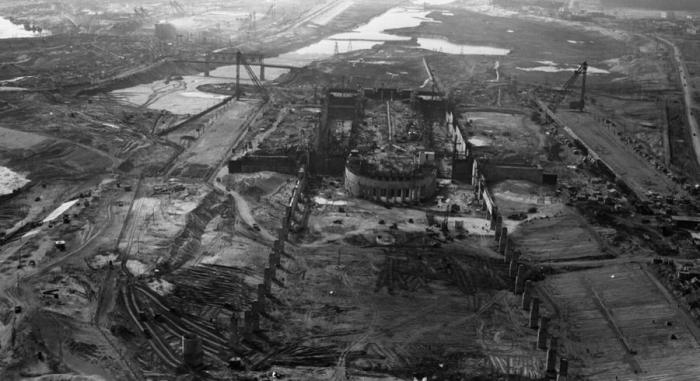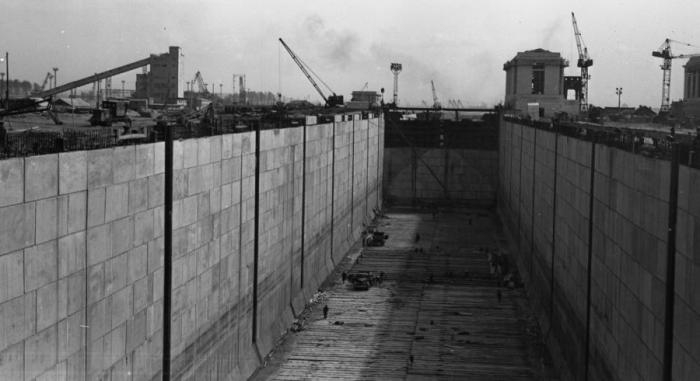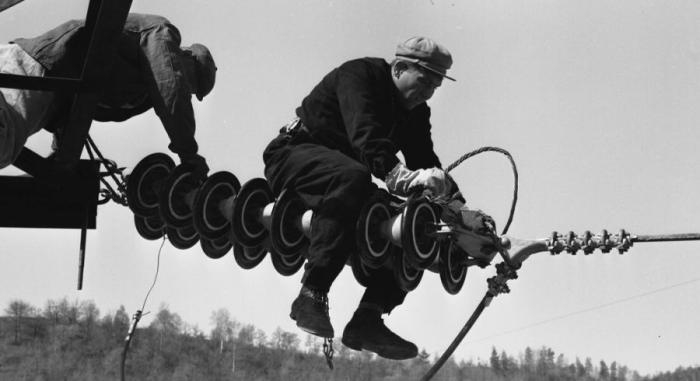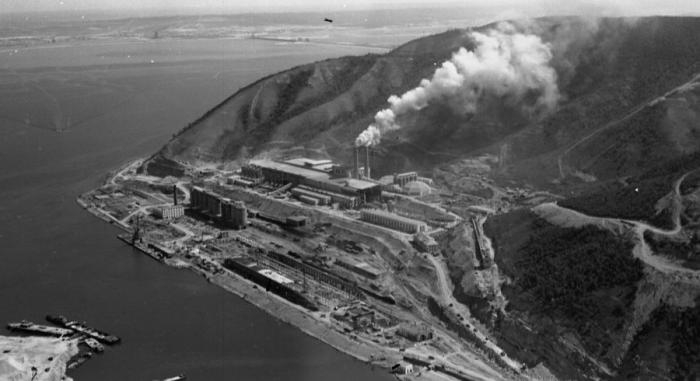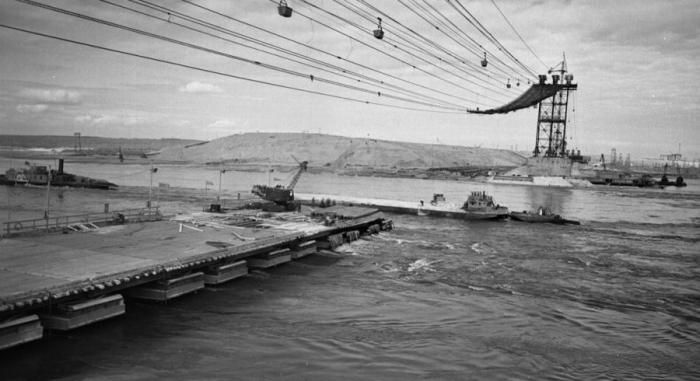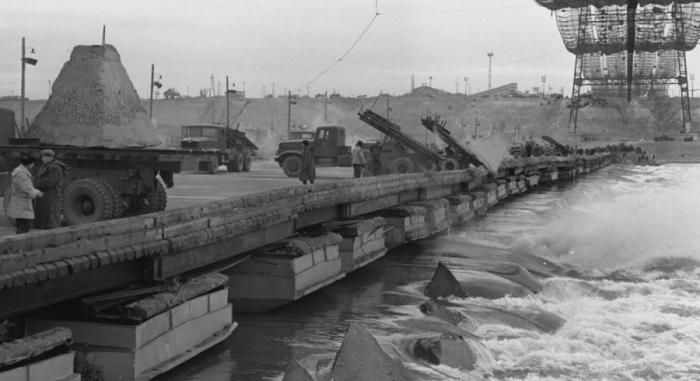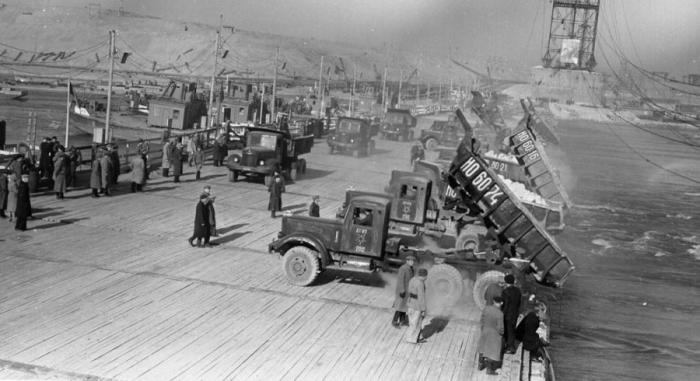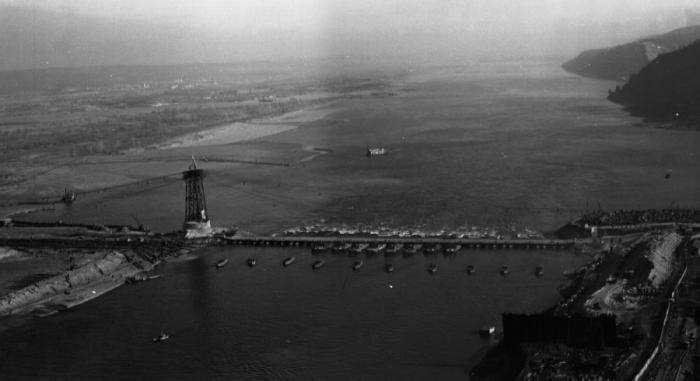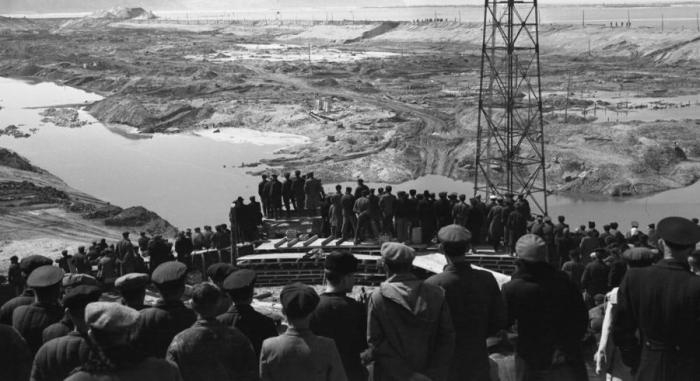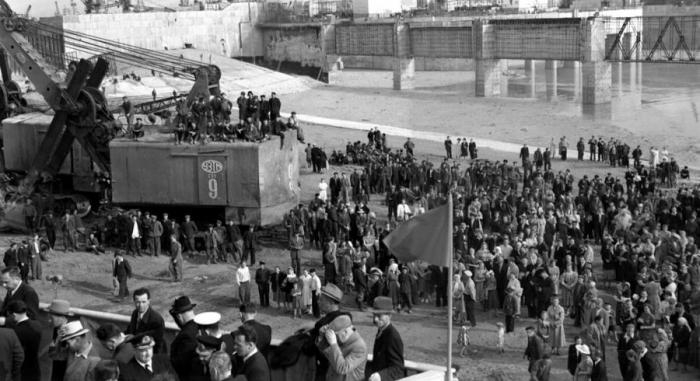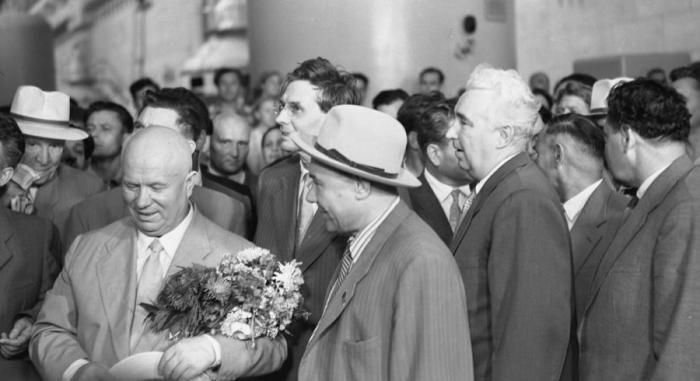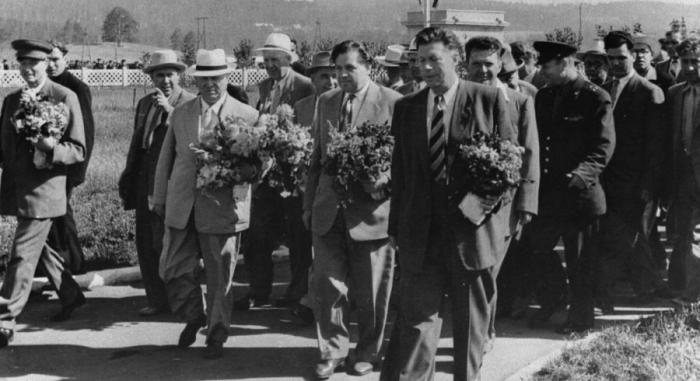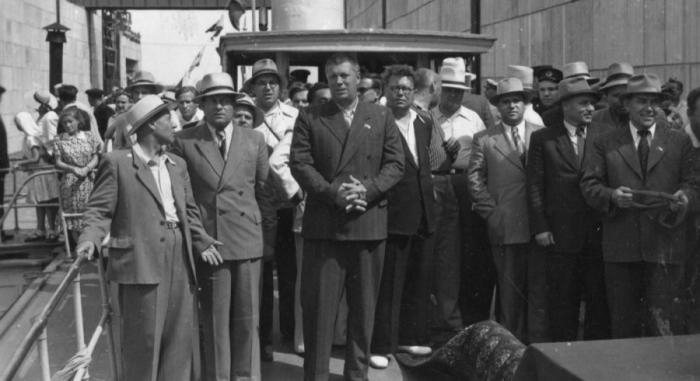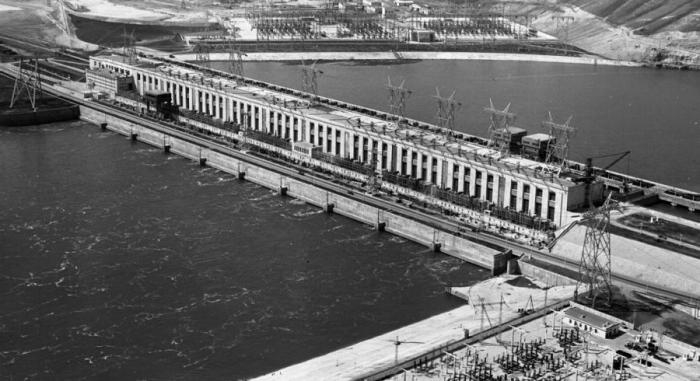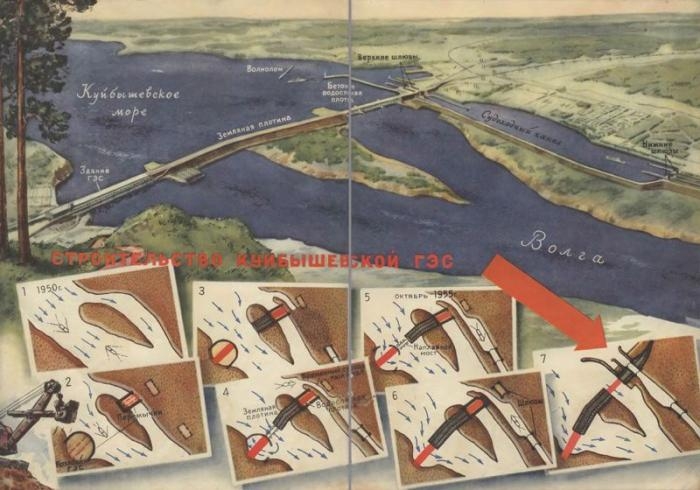The idea of hydroelectric station on the Volga near Samara Bend was proposed by Gleb Krzhizhanovsky in 1910. Ten years later K. V. Bogoyavlensky proposed a hydroelectruc station near Perevoloki, utilizing naturally existing water level difference. The disrupted economic system of the time did not allow this project to be realized.
In the early 1930s the Volga near Samara Bend and Yaroslavl was surveyed, and some dam projects were proposed. In 1937 the project of a dam near the villages of Perevoloki and Krasnaya Glinka was approved. Forced labour from Kuybyshev Camp was used (up to 30,000 people). In the autumn of 1940, oil fields were found near construction site, causing a suspension of construction.
The Hydroproject Institute made a survey in 1949, after which a decision was made to build the hydroelectric station near Zhigulyovsk. August 21, 1950, the project to create a station with installed power of 2.1 gigawatts was approved and construction was started.
In the photograph: before the construction, the Volga River, 1950.
Construction works have just begun. Construction was headed by I. Komzin.
Construction was started, as before, with forced labour used. Thousands of prisoners were forced to work there. In 1955, the number of prisoners involved reached 46,000!
Photographers were allowed to take pictures of civilian workers only.
The station’s foundation pit.
They used best equipment available at that time – drags, excavators and dump trucks.
A boat bridge.
Building an overflow dam.
They spent over 7 million m3 of concrete to build the station.
The overflow dam.
The overflow dam is 1 km long and is equipped with devices dissipating water energy.
It also features three portal bridge cranes with load-carrying capacity of 250 tons.
Near the machinery hall.
Government delegations and inspections would visit the construction site rather often.
A concrete-mixing plant.
A drag at work.
Installing the rotor wheel of the turbine.
The earth-fill dam of the station has a length of 2,800 m and is 600 m thick. Its maximum height is 50 m.
The machinery hall construction.
One of the divers participating in the machinery hall construction.
At the same time, they built twin locks on the left bank of the river.
One of the locks.
Tail locks.
Head locks.
Checking a high-voltage line.
A concrete-mixing plant.
Construction of a floating bridge between the station and its earth-fill dam.
In October, 1955 they tried to shut the river.
To shut the Volga, they threw over 1,765 ferroconcrete pyramids down on the bottom of the river.
Each pyramid had a weight of 10 tons.
It took them just 19 hours and 35 minutes to shut the river.
The dam began forming Kuybyshev Reservoir.
People came out to celebrate their success.
The Kuybyshev Reservoir has a surface area of 6,450 km2 and a volume of 58 billion cubic meters.
It is the largest reservoir in Europe and third in the world by surface area.
With the filling of the reservoir, some villages and towns, schools and hospitals were rebuilt on higher ground.
An opening ceremony of Zhigulyovskaya Hydroelectric Station took place on August 10th, 1957
and was attended by N. Khrushchev.
A lot of prisoners building the station were released, many had their sentences abridged.
The first turbine was put under load on December 29th, 1955.
In less than a year, by October 1956, 1,000 gigawatthours of electric energy was produced.
An old construction plan.
The complex includes a power plant house. Installed power is 2,315 MW, average annual production is 10,500 GWh. The power house has 20 generator units with Kaplan turbines.
The station covers peak loads and maintains frequency stability in the unified power system of Russia (UES), controls flood and maintains navigable waterway. Lower hydroelectric stations are utilised more effectively because of seasonal and over-year regulation provided by the dam. Energy produced by station is transferred by four 500 KV lines – two of them to UES of central Russia and two to UES of the Urals and the Middle Volga.
